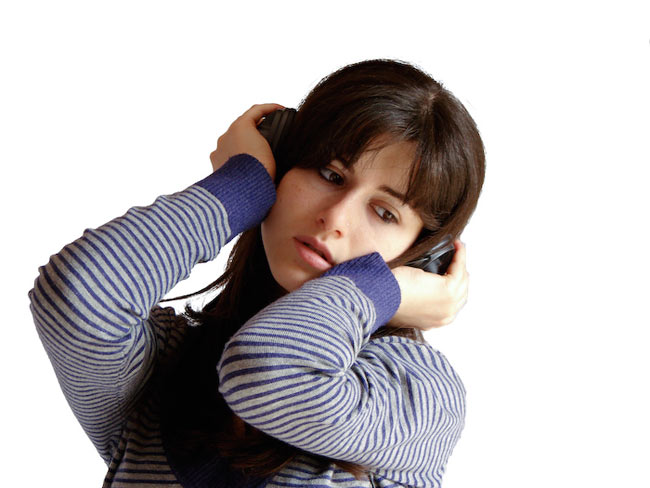Hearing Loss in Teens Spikes Mysteriously

Parents of teenagers have lamented for untold ages that their kids don't listen to them. But it could be that the teens today just don't hear them, physically.
Hearing loss among adolescents has increased by over 30 percent since around 1990, and now nearly 1-in-5 teenagers shows some degree of significant hearing loss, according to a study published this week in the Journal of the American Medical Association (JAMA). More disturbing, doctors are at a loss to explain the reason for the dramatic increase.
The worsening trend has both short- and long-term implications. Unlike vision loss, hearing loss cannot be treated well. Most of the time, it goes unnoticed. So, teenagers with hearing loss can suffer from poorer performance at school. One's hearing generally doesn't improve; the loss usually follows a slow, downhill slope starting by about age 35 for most people, particularly men.
The new study, however, suggests that 20 percent of the U.S. population will be entering adulthood already plagued with poor hearing.
Listen up
The study authors, led by Josef Shargorodsky of Brigham and Women's Hospital in Boston, compared data on hearing from a large survey conducted on about 3,000 teenagers from 1988 to 1994 with an updated survey on about 1,800 different teenagers from 2005 and 2006.
In every category, regardless of frequency or pitch of the sounds listened to or degree of hearing loss, the more recent generation of teenagers had worse hearing. The researchers couldn't pin down any cause, such as more ear infections or exposure to sudden, loud noises like gunfire.
Sign up for the Live Science daily newsletter now
Get the world’s most fascinating discoveries delivered straight to your inbox.
Noise would be the obvious culprit. Society has grown louder from traffic, power tools, appliances and killer amps at concerts, which combine over the course of a lifetime to kill the sensitive cells in the inner ear that convert sound waves into sound our brains can understand. While such noise has been around since 1990, one device that is relatively new is the earbud, funneling noise from a portable media player deep into your ear canal.
Follow up
Should the powers that be hear the pleas for more funding, the research team would like to investigate the noise issue more closely.
"The noise questions on the survey were not adequately specific or detailed to examine the relation," study co-author Gary Curhan of Brigham and Women's told LiveScience. "I would not say [the loss] is natural given that the prevalence has increased over the 15-year period. There must be environmental factors that are contributing. … The role of noise deserves further study."
You might have grown up in the 1960s and 1970s with the proliferation of headphones, or in the 1980s with the excesses of heavy metal and the dawn of the boom box. But the earbuds of today are different in that they are portable and a constant fixture among teenagers, more common than jewelry, allowing the ears little rest through the course of the day.
This could be the beginning of a hearing-loss epidemic. Depending on the degree of your hearing loss, all we can do is stay tuned for an update on this study.
- Top 5 Myths About the Male Body
- 10 Easy Paths to Self Destruction
- 7 Solid Health Tips That No Longer Apply

Christopher Wanjek is a Live Science contributor and a health and science writer. He is the author of three science books: Spacefarers (2020), Food at Work (2005) and Bad Medicine (2003). His "Food at Work" book and project, concerning workers' health, safety and productivity, was commissioned by the U.N.'s International Labor Organization. For Live Science, Christopher covers public health, nutrition and biology, and he has written extensively for The Washington Post and Sky & Telescope among others, as well as for the NASA Goddard Space Flight Center, where he was a senior writer. Christopher holds a Master of Health degree from Harvard School of Public Health and a degree in journalism from Temple University.










